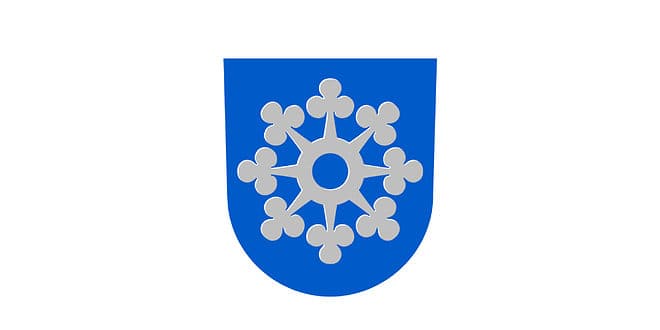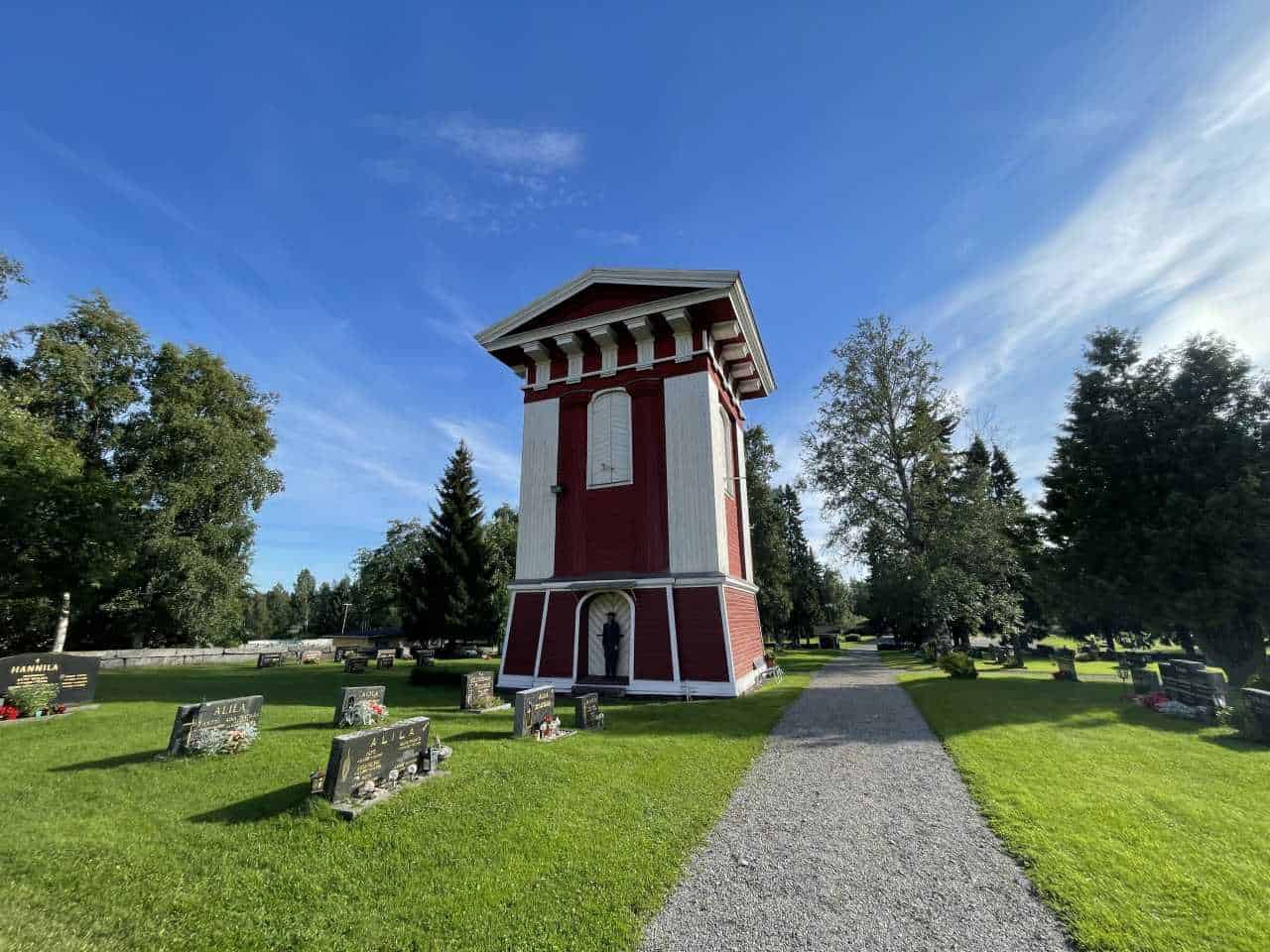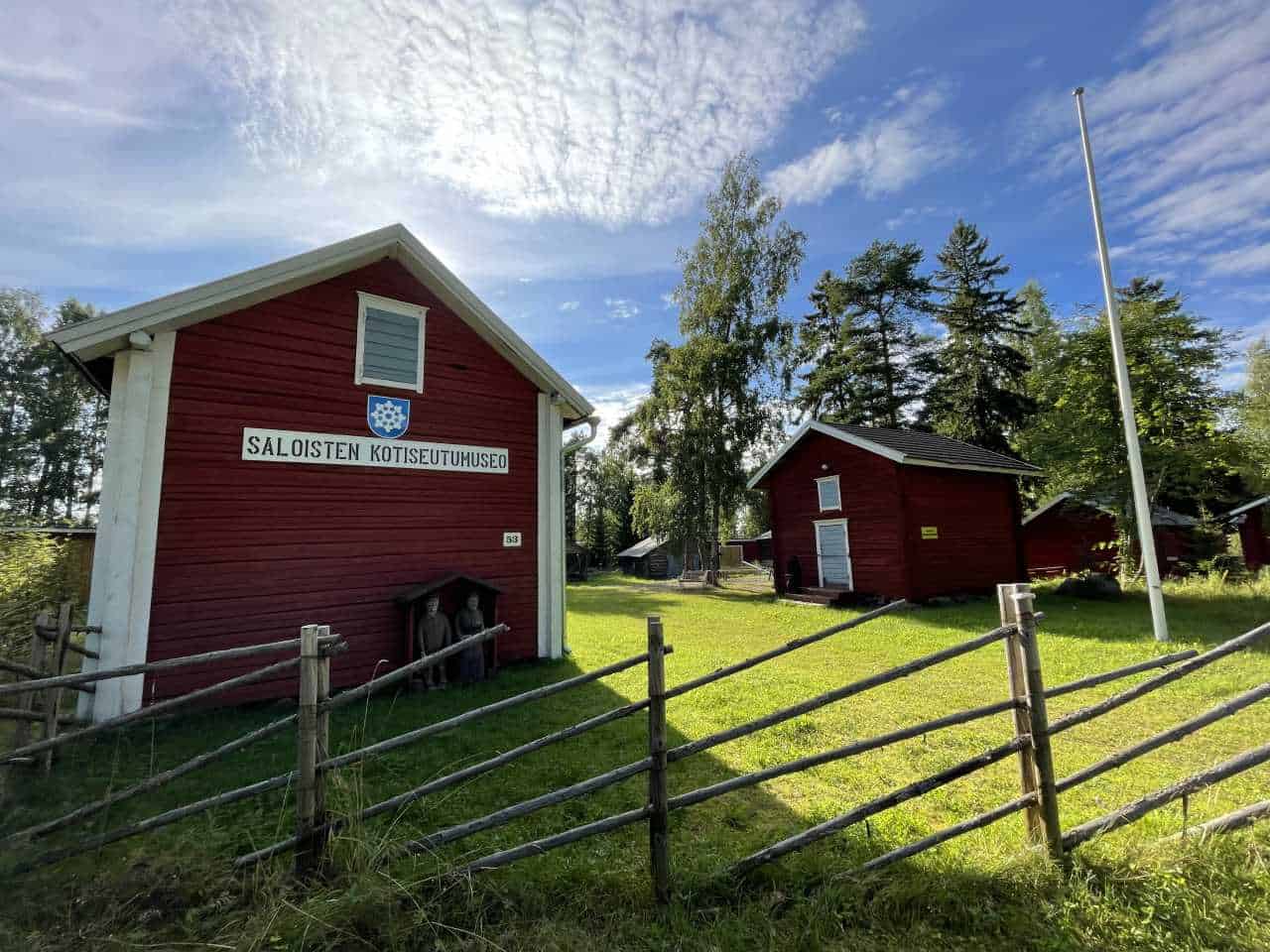Saloinen is a former municipality in North Ostrobothnia established in the 14th century that was absorbed into Raahe in 1973. It has an area of 248,8 square kilometers and a population of 5,914.
Where is Saloinen located?
The former municipality lies on the shore of Pohjanlahti, south of Raahe City. Unlike other Ostrobothnia coastal areas, Saloinen is not located at the mouth of a river or along a river. The area is traversed only by two small rivers, Piehinkijoki and Haapajoki. Another distinct trait of Saloinen is hilliness compared to the neighboring municipalities of the area. Haapajärvi reservoir used for the needs of the steel factory is the largest lake in the region.
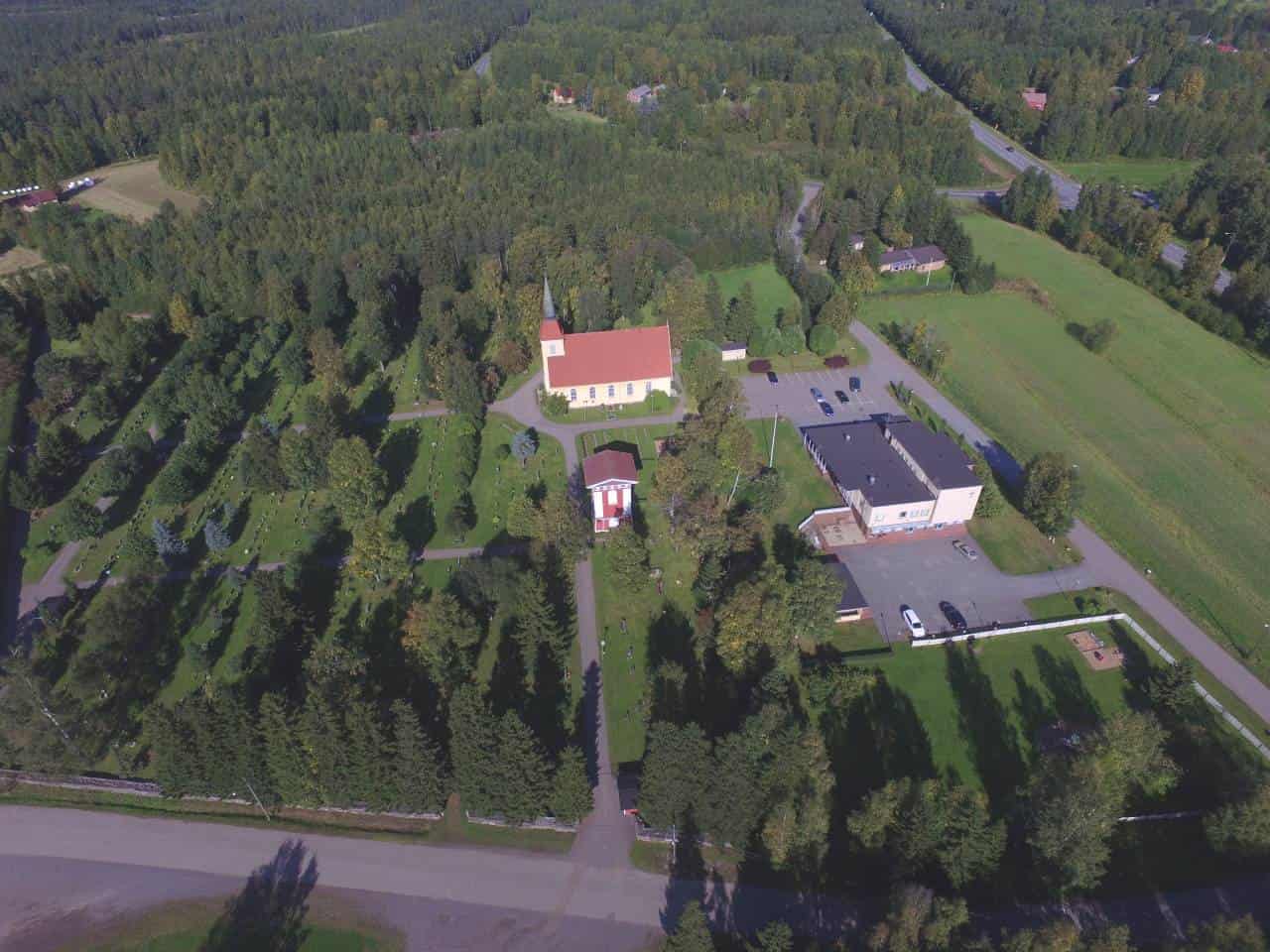
The coast is traditionally more densely populated than the heartlands, which mostly represent vast and unspoiled wilderness. Settlements are also concentrated on the banks of Piehinki and Haapajoki flowing inland. Due to land elevation, Kirkonkylä, which was an island off the bay coast, has almost completely merged with the mainland.
Attractions in Saloinen
- Saloinen Church
- 18th century wooden bell tower
- Kettukangas ancient site
- Kettukangas prehistoric stone enclosure
- Tervakangas graveyard
- Saloinen Museum
- Aittalahti nature trail
- Hedberg’s birthplace
- Jansson Gallery
- Lots of prehistoric sites
The former municipality boasts a great collection of sightseeing places related to history, culture and nature. The most valuable and popular one is the St. Olav’s Church in the village of Saloinen. The church was designed by Pekka Karvonen and built in 1932 replacing the old wooden church that burned down in a fire.
Some items survived the fire and are now on display in the brick church. They include St. Olav’s altar cabinet, the wooden sculptures of Virgin Mary, Peter and Paul, and John the Baptist, as well as a crucifix from the late 1400s and a cupboard with utensils from 1500.
Another important landmark is the Saloinen Homeland Museum in Arkkukari that has a grain shed, a 19th century fisherman house, a windmill, a smoke sauna, a fish salting shed, and two equipment sheds with horse-drawn vehicles and work machinery and tools.
If you are in Saloinen, you can also visit the Stone Age ancient site in Mattilanperä, the giant churches in Laivavaara and Kettukangas, and Aittalahti nature trail which has a birdwatching tower and offers stunning views of the landscapes.
Population
Today, industry is the bread and butter of a significant part of Saloinen inhabitants. The biggest employer is the steel factory Rautaruukki also known as SSAB Europe Raahe. The Swedish steel producer has 2,700 employes at its Raahe site. Most of the specialists who work here are graduates of SSAB’s Industrial Institute in Raahe.
There are people from Saloinen work in the maritime town in other fields. In small villages, the most popular activities are agriculture and forestry. When Saloinen was a municipality, it had many facilities that offered employment and services within easy reach. Once it merged into Raahe, most of the facilities were closed including the municipal office, library, health center and schools. The parish was expanded and renovated and continued offering services.
From 1970 to the current day, the population of Saloinen increased by about 700 people. Most of the inhabitants live in detached houses. Some terraced houses are found in Kirkonkylä and Savolahti. There are also a few apartment blocks in Satamakangas that serve as SSAB offices.
Well-known people from Saloinen
- Jenni Alexandrova
- Fredrik Gabriel Hedberg
- Katja Hänninen
- Johan Kelhälä
- Inkeri Kerola
- Antti Kinnunen
- Martti Levón
- Juuso Ollinpoika
- Jaakko Saariaho
- Matti Siniluoto
- Thomas Stenbäck
- Olli Torkkelinpoika
- Ljungo Tuomaanpoika
Villages of Saloinen
- Arkkukari
- Aunolanperä
- Haapajoki
- Honganpalo
- Hurnasperä
- Ketunperä
- Koskenkorva
- Kultalanperä
- Leinoperä
- Mattilanperä
- Ollinsaari
- Palonkylä
- Peltomaanperä
- Piehinki
- Romuperä
- Salonkylä
- Satamakangas
- Savolahti
- Siniluoto
- Tarpio
- Tokolanperä
- Ylipää
Village associations of Saloinen
- Haapajoki-Arkkukarin Kyläyhdistys ry
- Mattilanperän kyläyhdistys ry
- Ollinsaaren asukasyhdistys
- Palonkylän Asukasyhdistys ry
- Piehingin Kyläyhdistys ry
- Saloisten kylän asukasyhdistys ry
History of Saloinen
Prehistory
Saloinen is one of the oldest parishes in Ostrobothnia. The original name of the region is Salo which means big island. The name comes from the fact that the oldest settlements of Salo and Savolahti, where the parish was founded, were located on an island that was connected to the mainland by a tiny isthmus.
Salo started to emerge from the sea in the 4000s BC. There are many archeological remnants in Saloinen region. Most of them, like mounds, Lapland ruins, pits and giant churches belong to the early days of the Comba Ceramic Period.
Stone Age and Iron Age
Ostrobothnia’s best preserved Stone Age relics are giant churches, enclosed stone structures shaped like a rectangular or an oval that were supposedly used in seal hunting and as a shelter. Saloinen has 4 giant churches, the largest being Pirttivaara which is 26×38 meters in size. There are few Iron Age finds in Saloinen, which is most probably related to the increasing use of earthy raw materials at that time.
The most valuable artefact of that age is the Tervakangas cemetery where an iron knife, an iron buckle, bronze rings and bracelets and other metal things were found. The excavations from 1990-1993 revealed that the cemetery was founded somewhere between 100 and 500 AD.
It was located near a settlement on a cape that stretched out into the sea. According to archeological estimates, the cemetery went out of use in the 6th century or earlier. There are other ancient remnants discovered near the cemetery like stone structures, love pits and trapping pits.
Middle Ages
The first villages were Salo and Savolahti founded on a sea promontory connected to the mainland by a narrow strip of land. Salo was on the southern shore of the promontory and Savolahti on the northern shore. Due to land elevation, the isthmus area expanded up until the cape merged with the mainland. Salo’s chapel congregation was established in the 1320s under the municipality of Pietrasaari.
Salo became an independent parish in 1413. Another settlement founded in the Middle Ages was Piehinki, which was built along the Piehinkijoki River. The first church in Salo was destroyed by Russians during the war between Sweden and the Principality of Moscow (1495-1497). Fortunately, the most precious items were saved from Russians including the St. Olav’s altar cabinet and the sculpture of Virgin Mary. They were displayed in the wooden church built after the war.
In medieval times, Saloinen inhabitants earned a living from growing crops, raising livestock, sea fishing and hunting. Those living inland caught preys in the forest, while those living on the coastal were involved in fishing and seal hunting. Barley was the most cultivated cereal with rye coming right behind.
Salo people also were seafarers sailing to Stockholm and trading. On July 29th, an annual market was organized in Sal. It was connected to the mass of St. Olav. The market had local products as well as products brought on ships by seafarers.
In the 16th century, Salo experienced a population boom. It started with the foundation of Salo’s youngest land register village Palonkylä. With more and more houses and farms being built, the river valleys became densely populated, which led to the necessity of separating the region into chapel congregations, then into independent parishes. Kalajoki became independent in 1540 while Pyhäjoki in 1568.
The Reformation
The 16th century was marked by the Catholic Reformation. According to the new rules, Salo parish was obliged to hand over the ecclesiastical taxes to the crown. The bell tax was also introduced, which demanded every parish to give its bell to the crown or pay a tax to keep it. The medieval artefacts, crucifixes and decorations didn’t fall under any tax regulation. Salo paid 60 crowns in bell tax. This made researchers conclude that the parish had more than one bell.
Church Relocation
In the 17th century, the land elevation caused Salonlahti to dry up so much that visiting the church was dangerous. In 1622 the church was transferred from the promontory to the mainland in Kirkonmäki where it is currently located. In relation to this event, the church was expanded by 2,5 meters. In 1640s the church was decorated with a large collection of paintings by Christian Wilbrandt.
Foundation of the Town
A sudden change in the life of Saloinen happened in 1649 when Count Pietari Brahe decided to found the town of Salo. In 1952, Salo joined the lordship of Kajaani and was renamed Brahestadt (Raahe) after its founder and owner. It was planned to build the town around the port of Salo, but the port turned out to be too low, so Pietari Brahe decided to change the location of the town further north where it is today. In 1690, the Raahen-Salo congregation was established that included 4 other villages: Pattijoki, Olkijoki, Savolahti and Palo.
18th century difficulties
The turn of the 17th-18th century was extremely challenging for Salo. The first hit came with the Great Famine of 1695-1697 when many people died of hunger due the bad weather that compromised the grain harvests. Then came the Northern War that started in 1700 and resulted in the Russian occupation and Great Wrath. The occupants entered Salo in 1714 and left it in 1721.
Church Dispute
The 18th century was also marked by a big church dispute which took place between the clergy of the Raahe-Salo parish and the peasants of Salo. The conflict erupted when Raahe’s clergy reduced the number of services carried out in Salo church to once every 4-5 weeks. Previously, the service was held every Sunday. The cited reason for that was the large workload.
The news caused a revolt among the people of Saloinen who wanted to be granted the opportunity to hire their own priest. Things got worse when Thomas Stenbäck became vicar. His plan was to close the Salo Chapel and ask the people of Saloinen to attend the Raahe church service.
After years of negotiations, Stenbäck gave up on his plan and met some of the protesters’ demands. He repaired the Salo’s church and kept it open for the peasants. The service was again organized every Sunday.
Finnish War
The 19th century brought the Finnish War between Russia and Sweden that lasted from 1808 to 1809. The Finns retreated from Salo to Siikajoki where the first important battle took place. After getting defeated, Russians retreated through Salo to the south. Following another failed attack, an armistice was negotiated in Salo’s parsonage.
Municipal Reform
In 1865, the municipal and parish reform took place. According to a municipal degree, the church was separated from the secular administration. The old Raahen-Salo parish was divided into several chapel congregations: Raahe, Salo, Pattijoki and Vihanni.
Attempts were made to abolish the Salo congregation and annex it to the neighboring churches. The people of Salo opposed this idea and successfully defended their parish. The Salo parish finally became independent in 1921 and included the villages of Saloinen, Palo, Piehinki and Savolahti.
First Public School
Savolahti Public School was founded in 1870, being the first public education institution in the Oulu region. It was shared by Salo and Pattijoki chapel congregations. Öörn’s military farm offered its building to be equipped as a school. In the first years, Savolahti school was crowded because Raahe didn’t have one yet. In the academic year 1870-1871, there were 142 students.
The number slowly decreased, reaching 30 students in 1877. As the classrooms got emptier each year, the institution was closed in the beginning of the 20th century. Soon, a public school was founded in Saloinen, the largest village of the municipality. Its activity came to an end in 1967. Nowadays, the building is used by folk college that organizes weaving, gymnastics and carol singing groups for the locals.
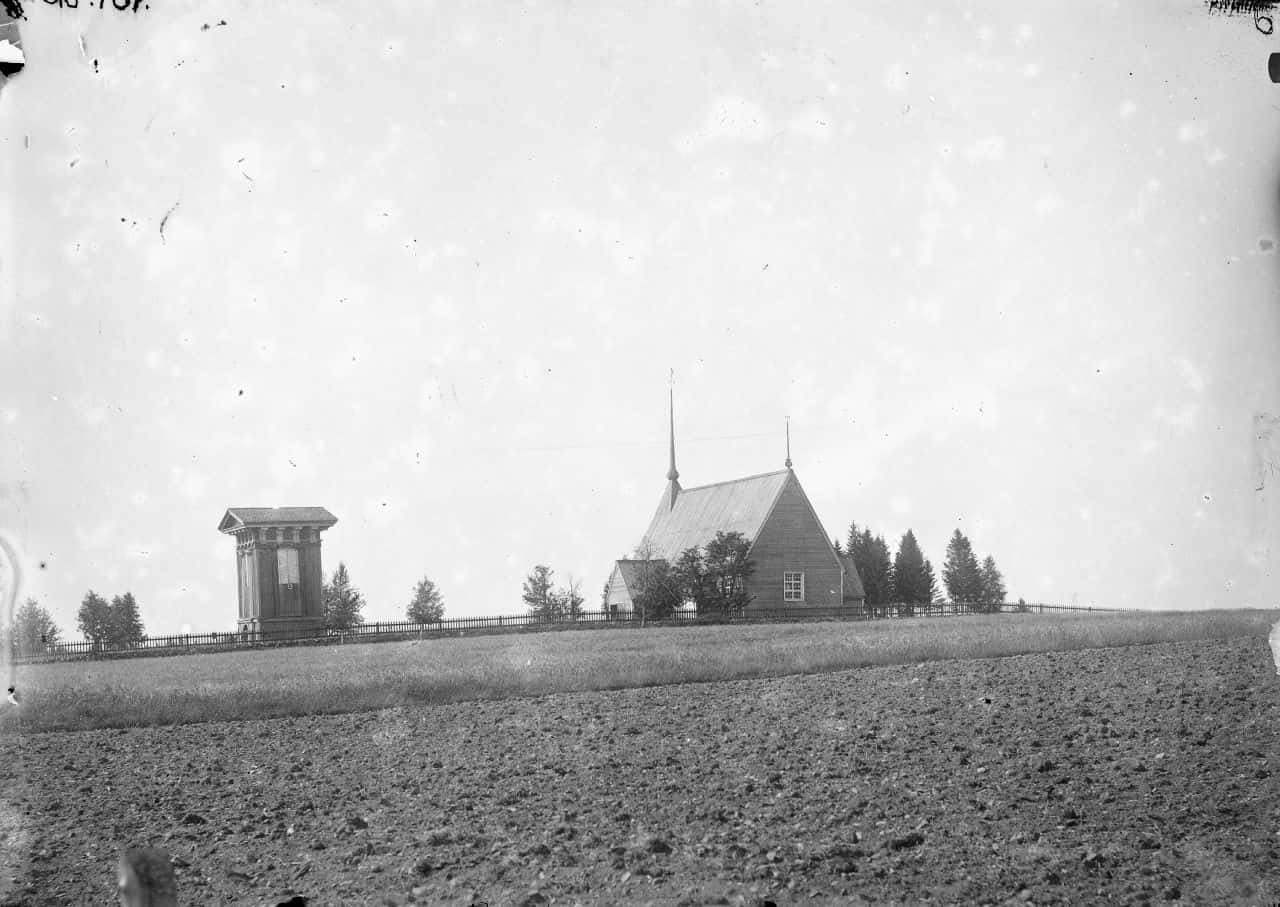
Church Fire
On Epiphany Day 1930, the wooden church of Salo parish that served peasants for 400 years burned down. The fire erupted from the fireplace, and it took a few hours to turn the church into ashes. While saving the church was not possible, some valuable artefacts were taken out of the building before being ravaged by fire. Soon after the disaster, the work on the new church began.
People and municipality decided to use bricks and plaster instead of wood but retain the church’s medieval charm. The ecclesiastical artefacts saved from the fire were displayed in the new church, which opened its doors for the parishioners in 1932. The church operates to present day, being one of the attractions of Saloinen and entire Raahe region.
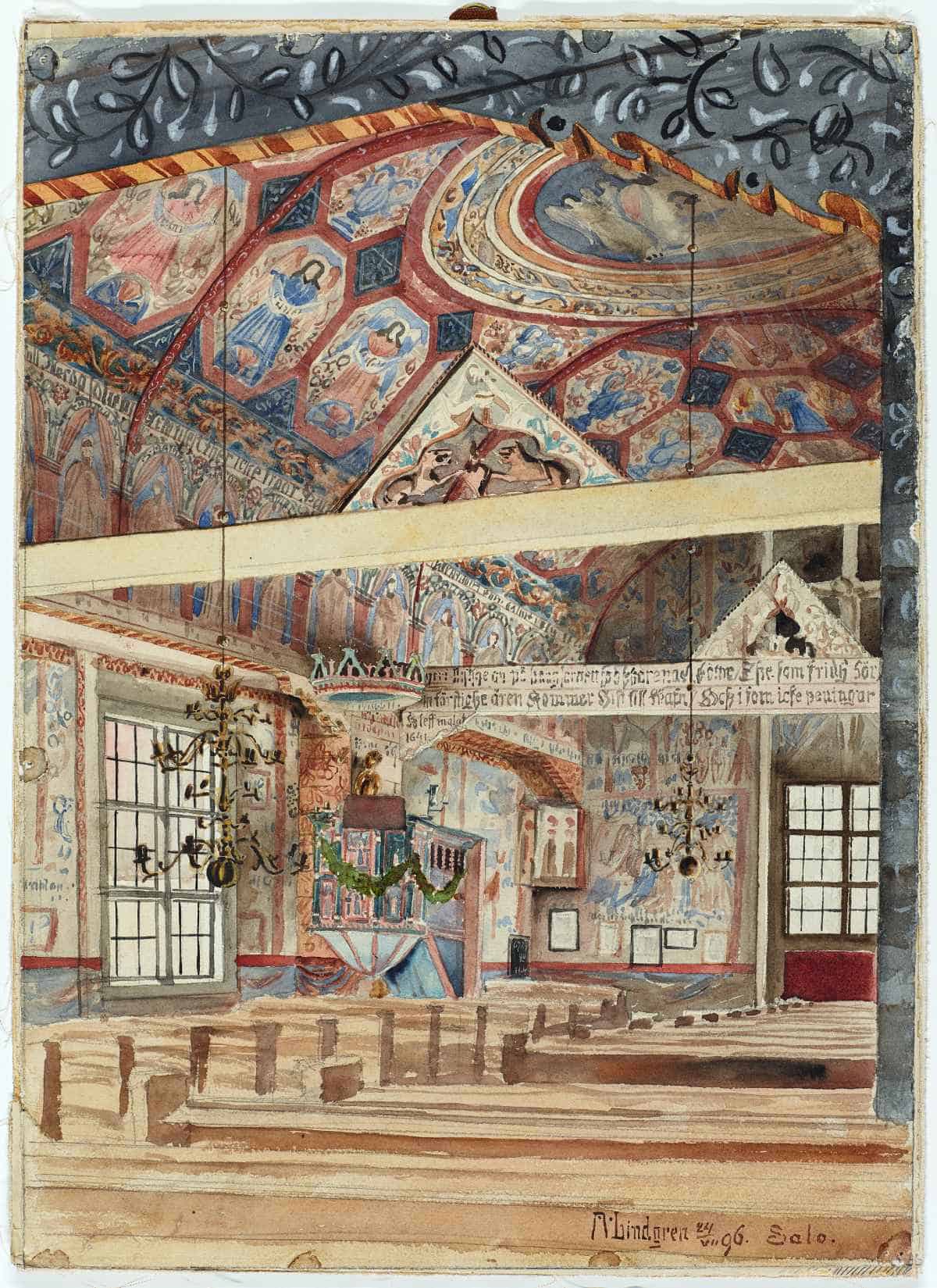
Construction of Steel Factory
A crucial event in the 20th century for Saloinen was the construction of the giant Rautaruukki steel factory. Its role was to supply the local shipbuilding sector and other industries with metal products. The planning started in the 1950s. Apart from the Finnish Government, the project was financially supported by Outokumpu, Valmet, Wärtsilä and Rauma-Repola.
After a detailed analysis, it was decided to place the factory in Rojuniemi, Saloinen and name it Rautaruukki. Construction kicked off in 1961 and lasted 3 years. On September 5, 1964, the departure of the first ship with steel from the port of Rautaruukki took place. Apart from the factory, an apartment block was built in Satamakanka to house Rautaruukki’s offices.
In the first year of operation, the factory had 6 employees. By 1970, the number of employees has grown to 1,700. The new factory caused an influx of new residents to Saloinen. Later in the 1970s, two villages were built near Salo for the factory workers coming from remote areas.
In the following decades, Rautaruukki expanded its production, increased the number of employees and started exporting abroad. In the 21st century, it opened sales offices in Shanghai, Beijing and Mumbai. Since 2014, the factory is part of the Swedish steel manufacturer SSAB.
Becoming part of Raahe
Another major change happened in 1973 when Saloinen lost the status of municipality and merged into Raahe. This event was connected to the construction of the steel factory. There have been negotiations about the merger since the late 1950s. Saloinen administration tried to suspend the union project for as long as possible.
In 1972, the city of Raahe passed the merger law and expected reciprocal actions from Salo’s authorities. However, Saloinen municipal council said a firm no to the project. This prompted the Government to forcibly include Saloinen in Raahe in 1973.
The loss of secular administrative independence didn’t lead to the loss of ecclesiastical independence. The Salo parish continued operating, but it had to share the management of funds with Raahe. This led to the creation of the Raahe Parish Association which was later joined by Pattijoki. In 2007, Saloinen lost its independent parish status and was merged into the Raahe parish.
 Raahe Guide Raahen Esittely
Raahe Guide Raahen Esittely
